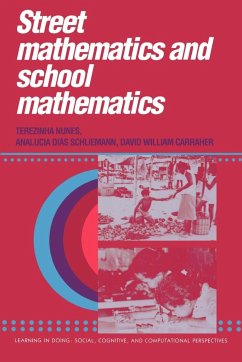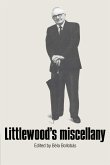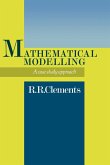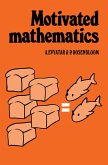People who learn to solve problems 'on the job' often have to do it differently from people who learn in theory. Practical knowledge and theoretical knowledge is different in some ways but similar in other ways - or else one would end up with wrong solutions to the problems. Mathematics is also like this. People who learn to calculate, for example, because they are involved in commerce frequently have a more practical way of doing mathematics than the way we are taught at school. This book is about the differences between what we call practical knowledge of mathematics - that is street mathematics - and mathematics learned in school, which is not learned in practice. The authors look at the differences between these two ways of solving mathematical problems and discuss their advantages and disadvantages. They also discuss ways of trying to put theory and practice together in mathematics teaching.
Table of contents:
Preface; Series foreword; 1. What is street mathematics?; 2. Arithmetic in the streets and in schools; 3. Written and oral arithmetic; 4. Situational representation in oral and written mathematics; 5. Situational and mathematical relations: A study on understanding proportions; 6. Reversibility and transfer in the schema of proportionality; 7. Reflections on street mathematics in hindsight; References; Index.
People who learn to solve problems 'on the job' often use different methods from people who learn in theory. Using a case study of Brazilian street children, this book examines the differences between the street mathematics they use in markets and mathematics they learn in school. The authors also discuss ways of trying to put theory and practice together in mathematics teaching.
Hinweis: Dieser Artikel kann nur an eine deutsche Lieferadresse ausgeliefert werden.
Table of contents:
Preface; Series foreword; 1. What is street mathematics?; 2. Arithmetic in the streets and in schools; 3. Written and oral arithmetic; 4. Situational representation in oral and written mathematics; 5. Situational and mathematical relations: A study on understanding proportions; 6. Reversibility and transfer in the schema of proportionality; 7. Reflections on street mathematics in hindsight; References; Index.
People who learn to solve problems 'on the job' often use different methods from people who learn in theory. Using a case study of Brazilian street children, this book examines the differences between the street mathematics they use in markets and mathematics they learn in school. The authors also discuss ways of trying to put theory and practice together in mathematics teaching.
Hinweis: Dieser Artikel kann nur an eine deutsche Lieferadresse ausgeliefert werden.








